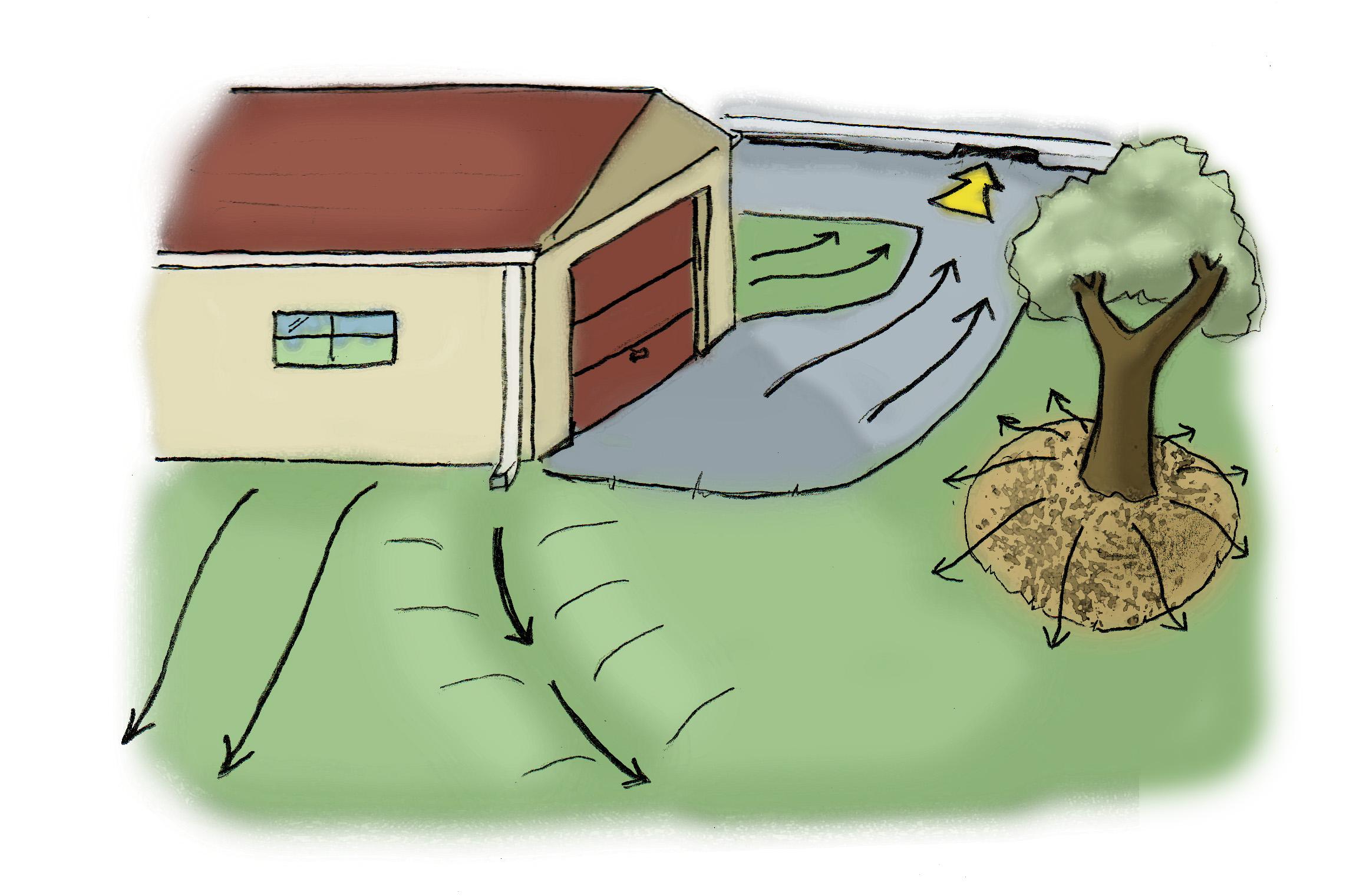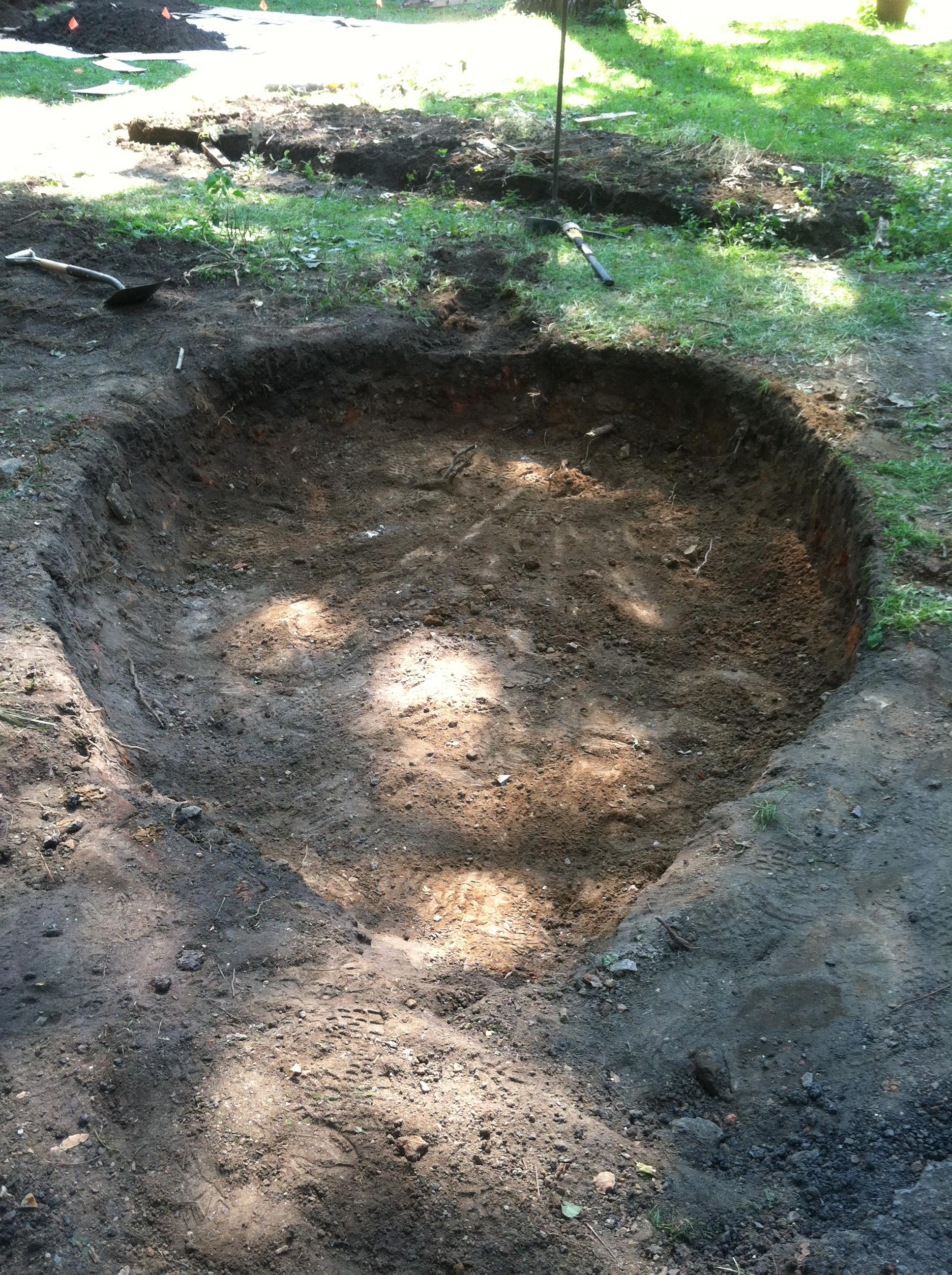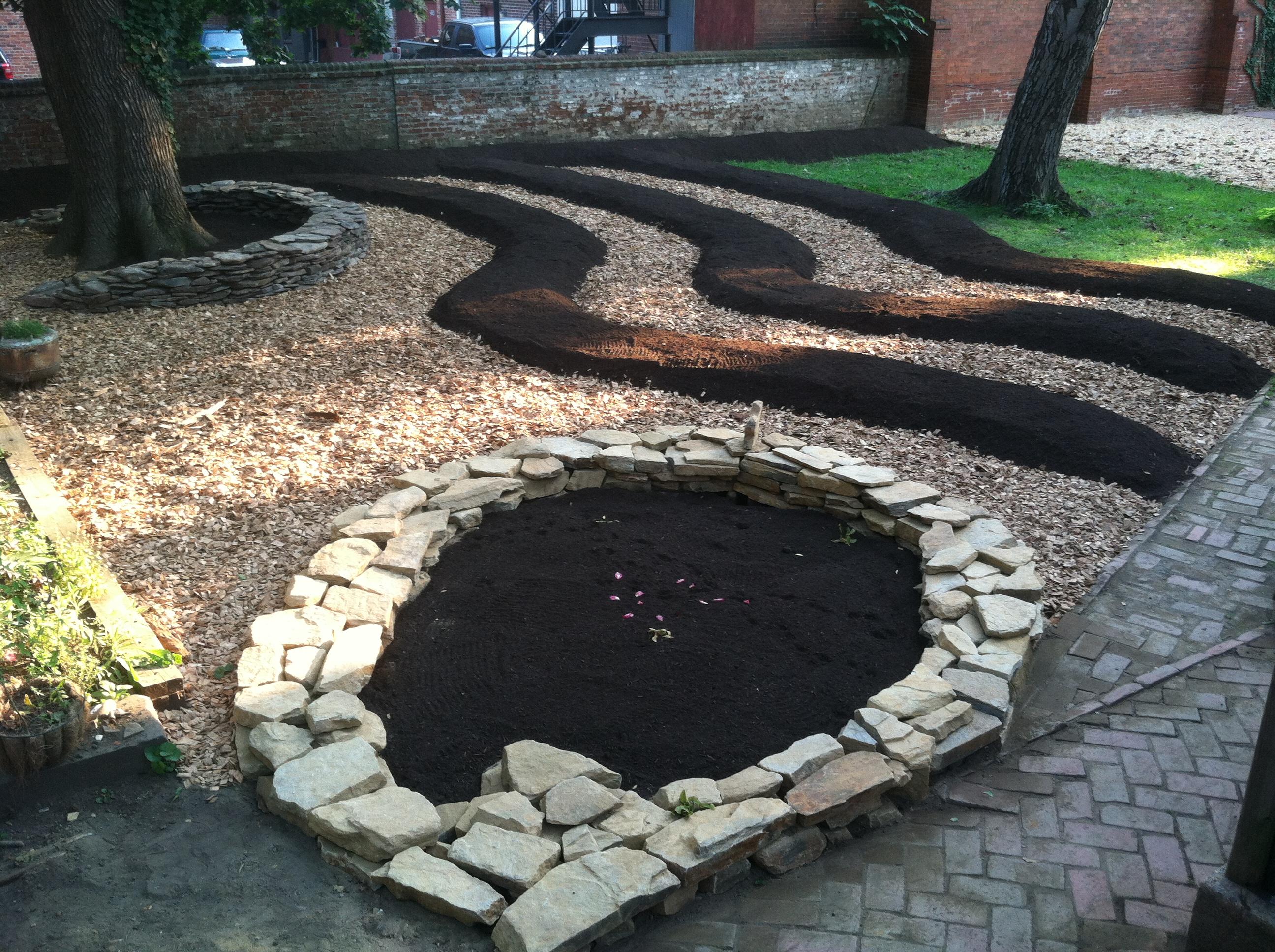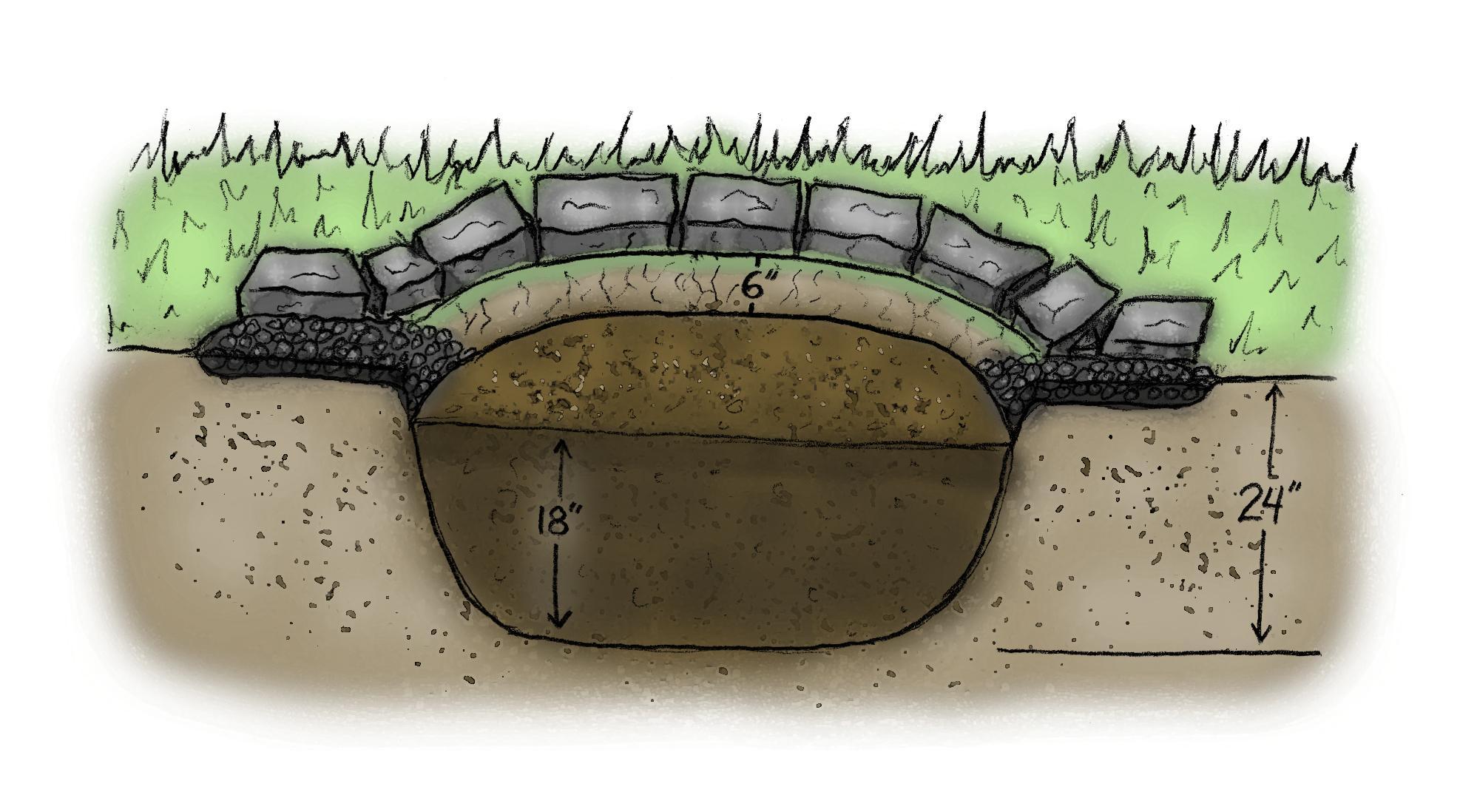
Rain gardens basically are upside down baseball mitts in the ground, water-sinking depressions that come in many shapes and forms. They are simple imitations of how a forest floor absorbs and sinks rain water through porous soil.

To capture the large volume of runoff we designed a three tiered rain garden that perfectly fit the slope, allowing the water to overflow from one garden to the next, assuring not one drop left the site. Note the French drain leading into the top bay that drains water sitting along the house foundation.

Voila! Filled with a 50:25:25 ratio of sand, soil, compost and finished with a permeable hardscape. This rain garden now sinks every drop from both house sites. For further details on soil mixing options and design approaches see the Rain Water Harvesting chapter in “Edible Landscapes with a Permaculture Twist”.
Planting
The picture at the beginning of the rain garden section is the same design in only its second year of planting! The irony of a rain garden is that it is more often than not very dry thanks to its fast draining character. Unfortunately most rain gardens are only planted up with a handful of drought tolerant natives when there are loads of function and harvest to be had from all the water capture and loose soil. Some of my rain garden favorites, such as Beach Plum, Juneberry, Elderberry, Aronia, and low bush Blueberry, thrive in the loose and occasionally wet/dry soil. Other beautiful and functional plants to try are Swamp Milk Weed (more attractive than it sounds), Echinacea, Hibuscus moscheutos (edible petals), Winterberry, Spicebush, and Bee Balm to name just a few. For a low care rain garden, native clump grasses will fill the niche. To balance the periods between rains in the first year, I mulch well and set up a simple drip irrigation or sprinkler as back up.
Green Streets & Green Parking Lots
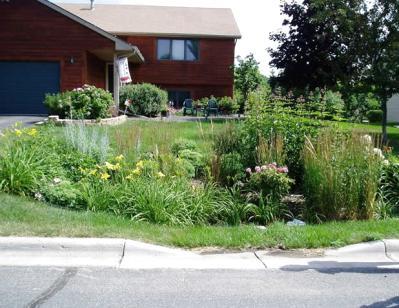 We can create mini watershed along our streets and within our parking lots by harvesting rainwater runoff into planted basins. Think of a street or parking lot as a watershed and collecting water runoff at multiple points dividing the ‘watershed’ into subwatersheds. Each subwatershed or basin yields an easily managed volume of harvested rainwater that quickly infiltrates to passively irrigate plantings.
We can create mini watershed along our streets and within our parking lots by harvesting rainwater runoff into planted basins. Think of a street or parking lot as a watershed and collecting water runoff at multiple points dividing the ‘watershed’ into subwatersheds. Each subwatershed or basin yields an easily managed volume of harvested rainwater that quickly infiltrates to passively irrigate plantings.
Planted with trees these rain garden basins act as living air conditioners, living carports, and living water and air filters. By harvesting storm water onsite we reduce street flooding, decrease the need for flood control and Bay pollution, we beautifies neighborhoods and creates wildlife habitat. .
– Virginia Stormwater Design Specifications
*Also see page on fungi used in conjunction with swales to clean up toxic runoff and specific swale design for holistic equine farms.
French Drains
French drains are great designs to harvest and move rain water where you want in the landscape. They can take on many different functions and looks. French drains in urban/suburban landscapes are usually designed along hardscapes, drives, patios, building foundations etc. to either capture and infiltrate run off water or move standing water further out in the landscape.
The basic design element of a French drain is a stone filled trench, either on contour or slightly off, that allows water to infiltrate quickly or be moved to where it can best be utilized. As with rain gardens French drains are used on flat or gently sloping land, suitable adjacent to patios, paved parking areas, buildings, driveways, walkways and down spouts. Designed with rain gardens or raised bed swales or just on their own French drains fit nicely into the existing landscape, adding a new dynamic that seamlessly combine beauty and function.
Resources
Brad Lancaster’s “Rain water Harvesting for Dry Lands and Beyond” volumes 1 & 2 are fantastically written and illustrated. Volume 2 is the real nitty gritty on swale and rain garden design and building.
The Permaculture Manual by Bill Mollison & David Holmgren is the bible on overall permaculture design but also detailed in earth works, swales, rain gardens etc.
Most states have rain garden publications and non-profits dedicated to helping you get started; many even offer financial support toward your project. See what is going on locally, you’ll hopefully be surprised.
Posted In: Edible and Ecological Landscape Design

